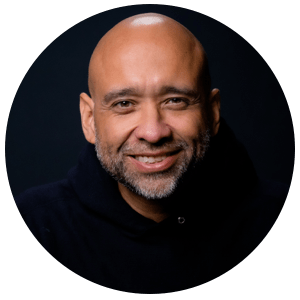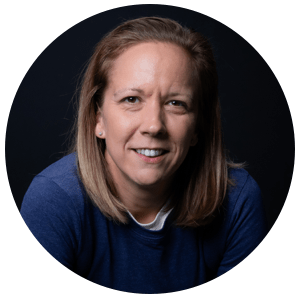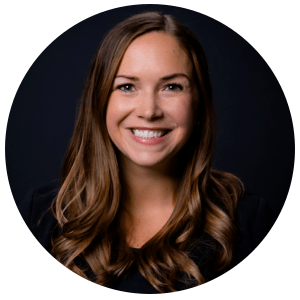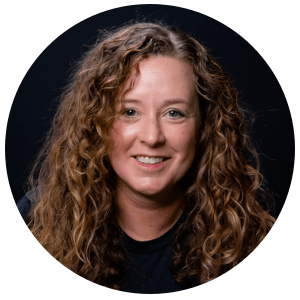Searching for New Opportunities

BY UDI LEDERGOR
CMO at Gong
Gong is the leading revenue intelligence platform. In fact, they invented the whole category. We sat down with Udi Ledergor, CMO at Gong, to discuss the “new normal”, emerging opportunities, and how he’s adapted his marketing strategy since COVID-19.
Some of the responses have been edited for brevity and clarity.
Everyone is talking about the “new normal” that emerged after COVID-19. What does that look like for you?
Personally, it looks like working from home. There are good sides to that. I definitely enjoy sitting down to have both lunch and dinner with my family, a privilege usually reserved for weekends. I spend my afternoons with the kids in the yard as they search for bugs or bounce on their bouncy house. That’s something I never got to do other than on weekends. I think there are some things that we’ll look back on and cherish in this period.
On the work side, I’m impressed with how quickly my team adapted to working from home. I had my concerns when we switched to working remotely, but it’s been going better than I imagined. Maybe it’s because my team is still pretty small. We’re only a dozen people. Perhaps managing a hundred is harder.
If I look at the macro environment, I think the world is focused on the “must-haves” rather than the “nice-to-haves.” In the current economic environment, we’re going to see businesses focus on the short term and what they really need. You can only switch your focus to the long-term when you have stability and the ability to forecast what’s happening. We don’t have that right now. People are like, “I don’t know how I’m going to get through this week, month, or quarter. Don’t talk to me about three-year initiatives right now.”
Has COVID-19 created new opportunities for Gong?
There are a lot of great businesses plummeting right now, through no fault of their own – any company in entertainment, hospitality, or travel. Their industries have been pulled out from under them, and no one could have prepared for that.
We’re very fortunate to find ourselves in a situation where there are probably an equal number of opportunities and threats, if not more opportunities.
Right now every salesperson in the world needs Gong, and we’re seeing opportunities that didn’t present themselves before this crisis. I’ll give you two examples.
First, when salespeople work together in an office, the sales manager can swivel their chair, look around, and see what their salespeople are doing. What accounts are they working on? What calls are going on? How healthy is everyone’s pipeline? Now that everyone’s working remotely, that’s very difficult to do without a tool like Gong.
Second, field sales teams were not big users of Gong because most of their meetings were face-to-face. While they could still capture their meetings with Gong’s mobile app, it wasn’t a common use case. Now those field teams are stranded at home and they’re trying to use technology to communicate with their customers and update their managers on how things are going. Again, a tool like Gong was built for this.
Those are just two opportunities that are helping Gong thrive right now. That’s not to say that our business is completely immune to the impact of the situation. We have customers who are suffering. Some of our customers make software for restaurants. Some of our customers make software for hiring. Those industries are taking it hard right now.
How have you adapted your marketing strategies in response to the crisis?
I think it’s useful to make a broad distinction between product and go-to-market.
Our product team quickly identified opportunities to see what’s changed in our customers’ needs when everyone switched to working from home. Now that uncertainty is our biggest enemy, sales managers are craving visibility, certainty, and predictability. We have already started releasing new features tailored to those changing needs. For example, allowing managers more visibility into what their teams are working on, what deals are being neglected, what deals are at risk, and what deals are moving forward in a healthy way.
We’re enhancing the product, not pivoting the product. We’re still the leading revenue intelligence platform. That hasn’t changed. Our goal is to help our customers get a true view of their reality and be able to react in the best way. We’re helping them do that in this new remote and work from home environment.
To turn that into a piece of advice for other companies: home in on what your customers need from you most right now and give them that in your product.
A couple of examples of companies pivoting well are Sendoso and Bizzabo.
Sendoso, a platform for sending small gifts to customers at the office, has quickly enhanced its product to allow users to send gifts to people’s homes. Bizzabo, a software platform for field events, has worked over the last month to produce a virtual event management platform to help companies do virtual events.
These are the type of changes you need to make right now. I realize that for some companies it’s going to be harder. If your entire business is in hospitality or travel, it’s going to be much harder. But you’ve got to turn every stone and look for how you can enhance your product to give your customers what they need right now.
On the go-to-market side, our main focus is on messaging and target audience. Those are two elements we are constantly experimenting with. In the last month, we’ve done more experiments than in a typical quarter to see what is going to resonate now.

One of our hypotheses was that people would be looking for remote sales management tools. We have never advertised Gong as a remote sales management tool because that was just one use case of our product. We didn’t want to limit ourselves to remote sales management.
About four weeks ago, we started advertising on LinkedIn and other platforms, positioning Gong as the number one remote sales management tool. People have been eating it up. We’re drowning in hundreds of demo requests. The conversion rates and the cost per lead are both better than our standard messaging because this is what’s top of people’s minds right now.
To abstract this to a piece of general advice: put yourself in your customer’s shoes. What is going to get their attention in the sea of emails that they’re getting? What would make them stop mid-scroll on a social media feed? It might be your standard messaging if you’re lucky, but it probably is not.
As long as we’re on messaging, another important lesson we very quickly learned is that when everyone zigs, you zag. At the start of the crisis, everyone was writing about COVID-19, so we went the other direction and focused on positive, reinforcing messages that gave people hope and practical solutions.
We’re still using humor, too. We’re still educating our customers and entertaining them at the same time. We’re goofing around on Zoom meetings and getting llamas to join our meetings. We’re giving dance classes to our employees, and we’re dressing up in funny wigs once a week. We’re having fun and sharing that with our customers. That’s what’s keeping us and them motivated and happy and productive and moving forward.
Where does conversational marketing fit into your marketing strategy?
We’ve been strong believers in conversational marketing for years, which is why we have the Drift bot set up on pretty much all of our landing pages and web pages. We see customers using them 24/7. I think round-the-clock usage has become an even stronger trend in the current environment because people are working all sorts of weird hours now. They’re taking the night shift because they’ve got to be with their kids in the morning or happen to be browsing our website after finally putting their kid down to sleep at four in the morning.
We’ve been experimenting with messaging changes across all of our mediums, including our Drift bot.
Shortly before COVID-19 struck, we decided to take our Drift bot in a very Gong-esque direction and turned it into a Bruno bot. Bruno is our bulldog mascot. If you go to our website, you’ll see that the Drift bot chat is actually a dog. We’re not even pretending that it’s human. Bruno manages our chatbot. He might bark at you or woof at you. He has quite the personality.
When COVID-19 became serious, we leaned into that messaging further. Now Bruno offers our website visitors information on how to work from home more efficiently. If Bruno sees you’re hanging around our website for more than a few seconds, he will bark at you and say, “Hey, David! Got a sec?” If you say yes, he’ll open a chat with you and ask what you’re looking for. We’re seeing a huge demand for that, and our bot is generating a lot of conversations and meetings for our sales team.
How do you picture your business unit and Gong as a company two or three years down the line?
I don’t know if I see any radical changes to Gong as a company. We’re lucky enough to be in a group of companies that stand a high likelihood of thriving during COVID-19. That helps us focus on what’s truly important and filter out some of our other initiatives that were just nice to have.
I suspect our appetite for remote work will grow. We have traditionally been against hiring remote workers. We’re a very centralized company in terms of geographies. We have two geographies where all the employees reside – but this situation has shown us that we can actually thrive working remotely.
I don’t think we’ll become a fully remote company. That’s not in our DNA. But I think our appetite for remote work has gone up, and that’ll probably remain the case.
It’ll also be interesting to see what the workplace looks like if social distancing continues. I’m hearing talks about working in the office in shifts or teams coming in for half-days or two days a week to allow for social distancing. It’ll be interesting to see those sorts of changes
At the end of the day, this is a kick in the butt for all businesses. You could be knocked out by it, or you could use it as a wakeup call to refocus yourself. Work out the number one, two, and three initiatives. Then throw most everything else out to focus on those initiatives.
Responding to Adversity With Empathy

BY ERIC WILLIAMSON
VP of Brand and Digital Marketing at Acquia
Acquia is the digital experience platform behind some of the biggest brands in the world. We jumped on a call with Eric Williamson, Acquia’s VP of Brand and Digital Marketing, to learn how he’s pivoted his marketing and management strategies in adverse circumstances.
Some of the responses have been edited for brevity and clarity.
How has your life changed during the Coronavirus Pandemic?
A little under a third of our workforce was fully remote – but I’m not one of them. I used to spend most of my time in the office. Much like other people who didn’t work remotely, this has been a huge shift for me. We’re thinking, “How does this work? How do you operate your day?” I’ve adjusted, but I’m not wired for working remotely all the time. It’s been an interesting first couple of weeks.
We’ve seen a massive increase in meetings, although they’re a different type of meeting. Before you had one-hour meetings and big blocks of time in between where you could get work done. But now you have almost a full day of these 30-minute meetings that seem to replace some of the impromptu and informal office conversations.
From a time management and productivity standpoint, it took some adjustment. I have four teams underneath me, and managing them requires a different mindset now that they’re remote. All of us had to adjust, shifting to something that allows for a more remote style of management and execution.
We’re also going through all the emotional aspects of this crisis from an individual standpoint. We’re worried about our family, the stock market, and everything else. I think it takes a toll on all of us.
Recognizing that new stress and being self-aware about it is quite helpful.
How have you adapted your marketing strategies in response to the crisis?
There were a few steps to our response. The first, which we did very quickly, was a full messaging audit. We looked at all of our ads, email subject lines, and so on, and we removed or adjusted anything that could come off as insensitive during this time.
Then we did an industry audit using some of the information coming from financial analysts. We identified three or four industries – travel, hospitality, energy – that aren’t going to be spending any money until 2021 at the earliest. We pushed pause on our media targeting for the industries we know are not able to be in the market right now.
From a messaging standpoint, we created guidelines. They were almost like a manifesto. We had a couple of key principles. For example, early on when this crisis was new, everybody was in a state of shock. Everybody was thinking, “What the heck is going on?” During that stage, our main goal with our messaging was to do something, not just say something. During that state of shock, people appreciated action more than words.
Our main campaign was an offer to help. Our company offers a digital experience platform. We have a lot of government and healthcare clients, so we made sure we were offering free services to customers in those industries to ensure they could scale up their bandwidth.
In terms of our overall messaging, we’ve shifted to a more empathetic tone. What I mean by that is not simply acknowledging the situation, which everybody is doing. Instead, we are acknowledging the situation and focusing on how we’re going to come through this together.
Are there any new marketing challenges Acquia is facing?
As a B2B company, events are a big part of our marketing strategy, both in terms of pipeline and engagement. In fact, Q2 and Q3 were scheduled to be our busiest quarters in terms of events.
So we’ve had to come up with a lot of different things we can do, such as virtual events and taking our events budget and moving it to other marketing strategies.
We’ve been really transparent and said, “We’re going to try these things out and see if they work.” That comes back to our campaign, too. We’re trying things out, seeing what works, and sharing that advice with our customers.
What role does conversational marketing play in your marketing strategy?
We’ve continued to increase our investment in conversational marketing, as it’s been one of the stars within our marketing strategy. We expanded our investment with Drift right at the onset of this crisis. We’re trying out their automation platform. So far, it’s performing really well. This isn’t something that we decided on because of this crisis, but I’m glad we were in the middle of testing it out when things went down.
How will this crisis change Acquia? What do you think the company will look like in two or three years?
Throughout the crisis, our CEO and executive team have done a great job with employee communication. They’ve always been very good about having quarterly company-wide meetings, but during this crisis they’ve gone to a new level.
For example, our CEO holds Q&A open hours on Zoom every other week. Hundreds of people will join the call and ask him questions, and he’ll just answer them. If he doesn’t know the answer, he’ll find out and follow up.
While I see internal communication tapering off, I think we’re going to see an increase in transparency and more frequent communications overall.
From a business standpoint, I think one of the biggest shifts will be moving our focus from net new logos and ARR growth to retention. We’re probably going to see more of an intense focus on our existing customers to ensure they’re having a really excellent product experience.
I can see our messaging staying empathetic, too. It might be less “we’re in this crisis together” and more “we’re in this transformation together.” We’ll continue to focus more on the positive value-based messaging, as opposed to the pain points and negatives.
Building on Solid Foundations

BY STEPHEN FARNSWORTH
Head of Partnerships at Outreach
Outreach is a sales enablement platform bent on changing the way companies engage with customers throughout their lifecycle. We caught up with Stephen Farnsworth, Outreach’s Head of Partnerships, to find out how his team has been coping since they moved to distributed work.
Some of the responses have been edited for brevity and clarity.
How have your personal and professional lives changed during the Coronavirus Pandemic?
We’ve all been forced to work remotely. I think SaaS companies are probably better equipped to manage the change. We’re still operating at pretty close to 100% productivity.
But as an organization there have been a lot of changes.
For example, we used to onboard people in the office. We’d have some slides for them, we’d bring in lunch, and they would meet some of our executives. It was a very personal experience. We’ve had to figure out how we replicate that virtually.
We brought on 30 people a couple of weeks ago – all remotely. It was our largest hiring week class ever. We had to work out how to get them their work laptop, how to make sure they felt appreciated, how to get them access to all the data and systems they needed. That was a very unique thing for us to do.
How are you supporting new and existing employees through this transition?
Communication has been key, so we’ve introduced more syncs with our employees. I manage our partnerships team, which is relatively small. Since going remote, we’ve had a daily stand up each morning that we simply didn’t need when we were in the office. It’s a small change, but it helps us stay on track.
We’ve used more software, too. I’ve always been somebody that’s struggled to use project management software on a day-to-day basis. But our project management platform helps us understand our day-to-day priorities and keep track of projects that are on our list.
There’s been a lot of company-driven efforts to make sure people feel included and feel part of the company. We have Slack channels filled with remote working tips and other informal channels where people anonymously post old pictures of themselves and everyone else tries to get to know them and guess who it is. It’s meant to try to bring people a little bit closer together.
We’re also careful to acknowledge everyone’s individual schedule. Some of our team members have kids at home. It’s impossible to work a regular nine-to-five when you’re balancing your work with homeschooling. We’re trying to figure out the best way to manage that.
We’re providing a lot of flexibility, and we’ve even added a $100 per week stipend for parents to spend on educational materials and tools.
What new challenges and pressures are you and your business facing?
We’ve had to adapt as we’ve seen some of our customers struggle.
Say we sell a thousand licenses to a company and all of a sudden they have to cut half their sales reps. Even though their contract says they have to pay for all their licenses for the full year, we have to be realistic with the situation. We need to act more like a partner and make sure that we can help that company get through this crisis.
How have you adapted your business strategy in response to the crisis?
No one can make concrete predictions on what’s going to happen and that means they can’t plan how they’re going to continue to sell. Even large public companies aren’t issuing guidance.
We’re in a similar spot so we’re planning for a dozen different situations at once. If things happen one way, our executive team has Plan A prepared. We’ll hire more and go aggressive. But if things go another way, we go with Plan B. We slow down our hiring and think more pragmatically.
There’s a plan for everything at this point and what we’re looking for are the triggers for each of those plans.
I think we have a very clear strategy and a set of tactics with different options and clear criteria around them. We know how to handle our business based on the way things go with this crisis. We’re not just operating on a knee-jerk basis.
We’re also validating our strategies with the help of our board and investors. We’re taking our plans to them and asking, “Is this in line with your other investments and companies? Are we being too aggressive, or are we being too passive here?”
We’ve got all the options, but we’re still looking for feedback on the best operating model.
How do you picture your business two or three years down the line?
We’re very grateful for how frugal and careful we’ve been as a business. For example, last year, when we didn’t need to raise money, our leadership group still decided to do a round of fundraising. They took a long-term view, and now we’re at a point where we’re in a really solid spot.
When I think of two or three years down the line, I think we’ll double down on that. We will continue to be cautious while still investing heavily for the future – and doing so in a really sustainable way.
We want to be in a position where we can continue to innovate rather than pull back. That’ll allow us to take advantage of any opportunities that present themselves to us.
I think that that mentality will persist for the next two to three years. We will find more ways to do things at scale while making sure we’re being very efficient with our resources.


























